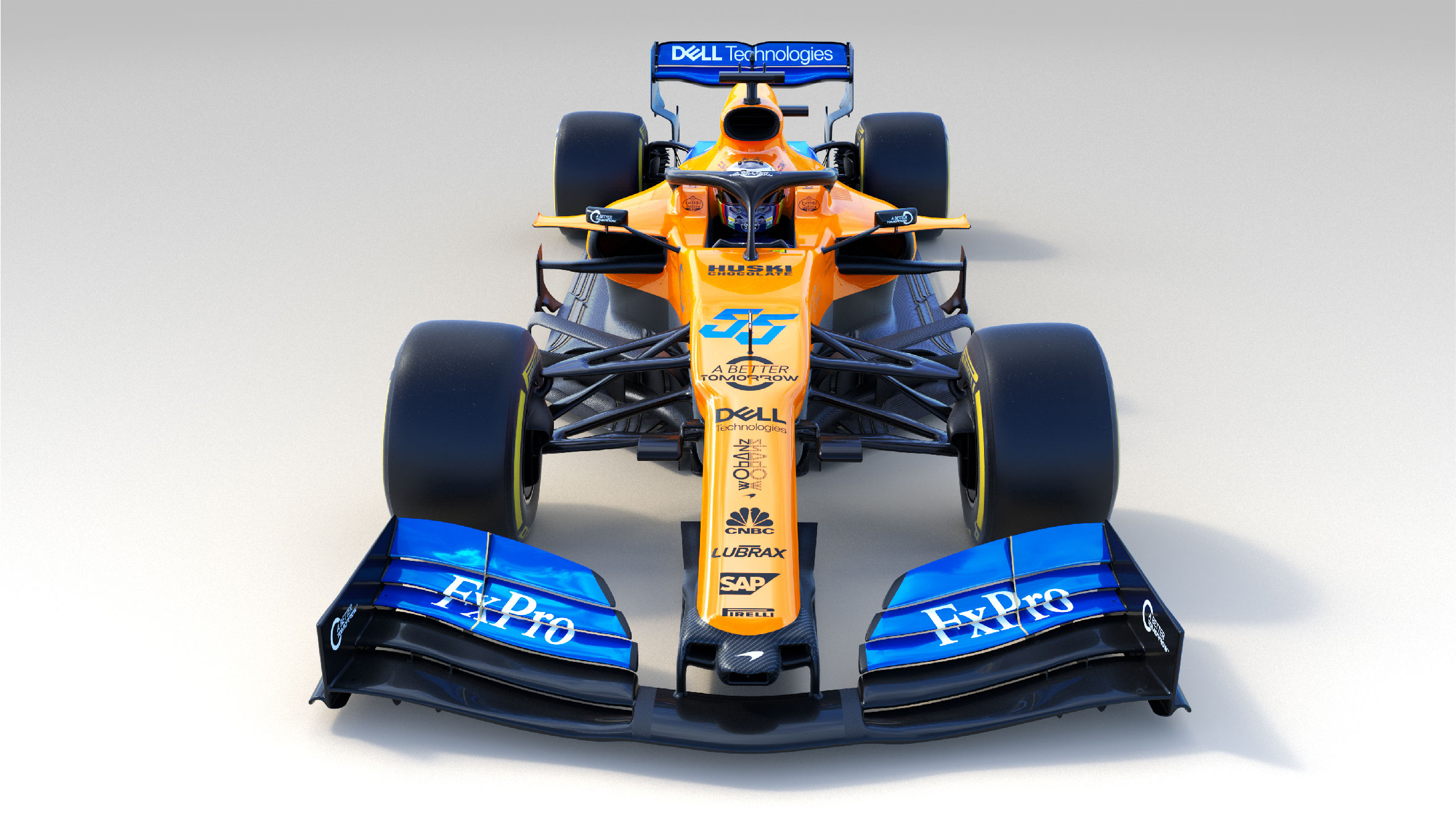McLaren MCL34
McLaren’s 2018 season was not the revolution that the Woking based team had hoped it would be, even with the introduction of the Renault power unit. However, their new 2019 contender – the MCL34 – might just be the car to boost the team up the grid.
This page will delve into the technical secrets behind this year’s McLaren MCL34 F1 car as well as the technical updates that McLaren will add to its MCL34 throughout the season.
-
McLaren MCL34 China Tech update
-
McLaren MCL34 Bahrain Tech update
-
McLaren MCL34 Australia Tech update
-
McLaren MCL34 launch
McLaren MCL34 China Tech update
The McLaren MCL34 featured a new nose at the Chinese GP. This new iteration featured a small hole in the sides of the nose. This could be a method of extracting clean oncoming airflow and channeling it towards the underfloor.
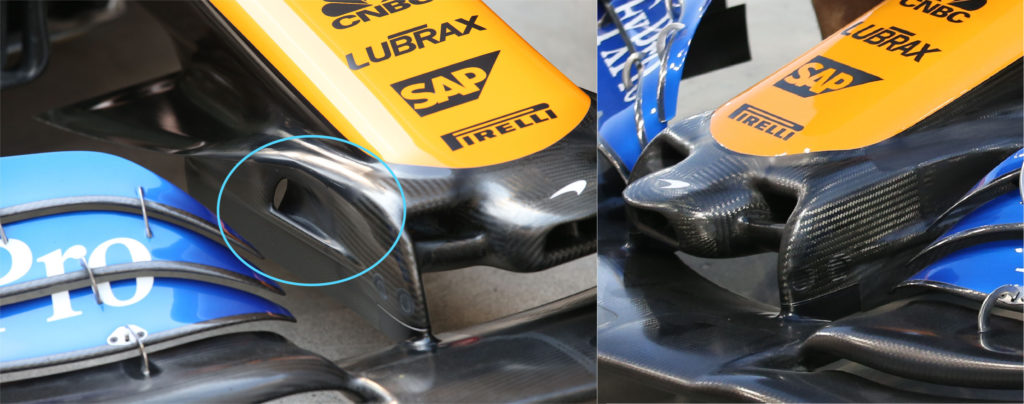
McLaren also added another element to their front brake duct which was an oblong-shaped insert. This could be a form of brake blanking which aims to reduce the amount of airflow going to the brake system and therefore reduces the amount of cooling. Brakes are similar to tyres in that they operate best within a specified temperature window. Therefore teams design the brake duct to provide maximum cooling, and then reduce the cooling level depending on the requirements of the track by blocking areas of the duct, or ‘blanking’ them.

Some serious cameras were spotted on the McLaren MCL34, some of which seemed to have their lenses covered. These could be high resolution thermal camera which could be used to measure the surface temperature of the tyres. Alternatively they could be measuring the dynamic behaviour of the suspension or simply for the Netflix documentary ‘Drive to Survive’.

McLaren MCL34 Bahrain Tech update
McLaren added a series of winglets to the lower area of the MCL34’s front brake duct. In Australia, we can just about see a couple of similar shaped winglets that are relatively far apart (highlighted in blue below). Whereas the iteration seen at Bahrain featured a series of five winglets which were much closer together.
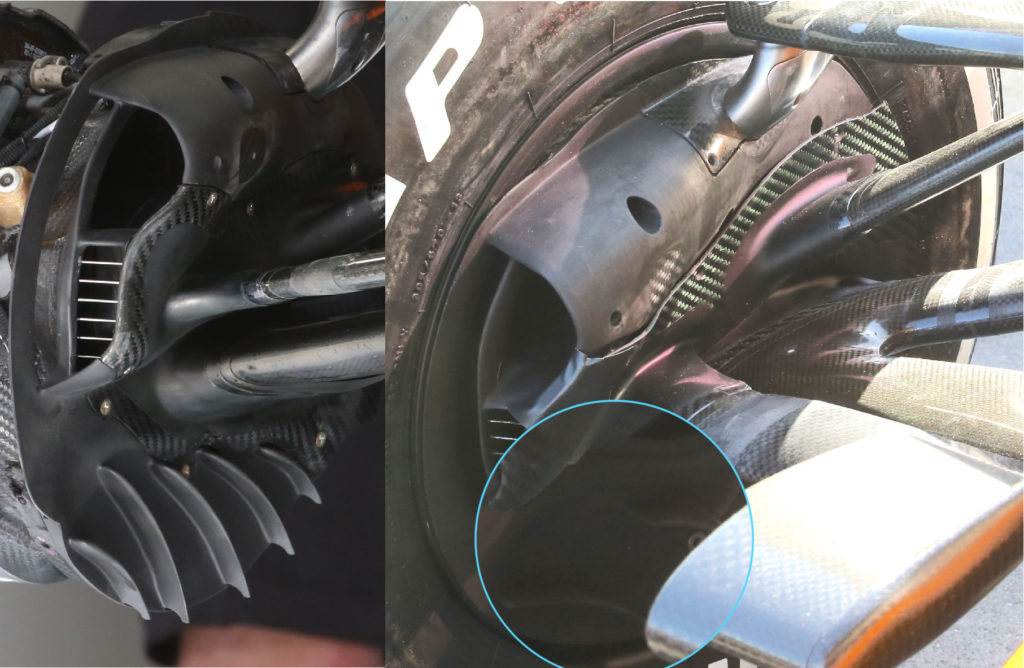
McLaren also brought an updated bargeboard design to the Bahrain GP. A series of small vertical elements were added to the floor of the front portion of the bargeboard.
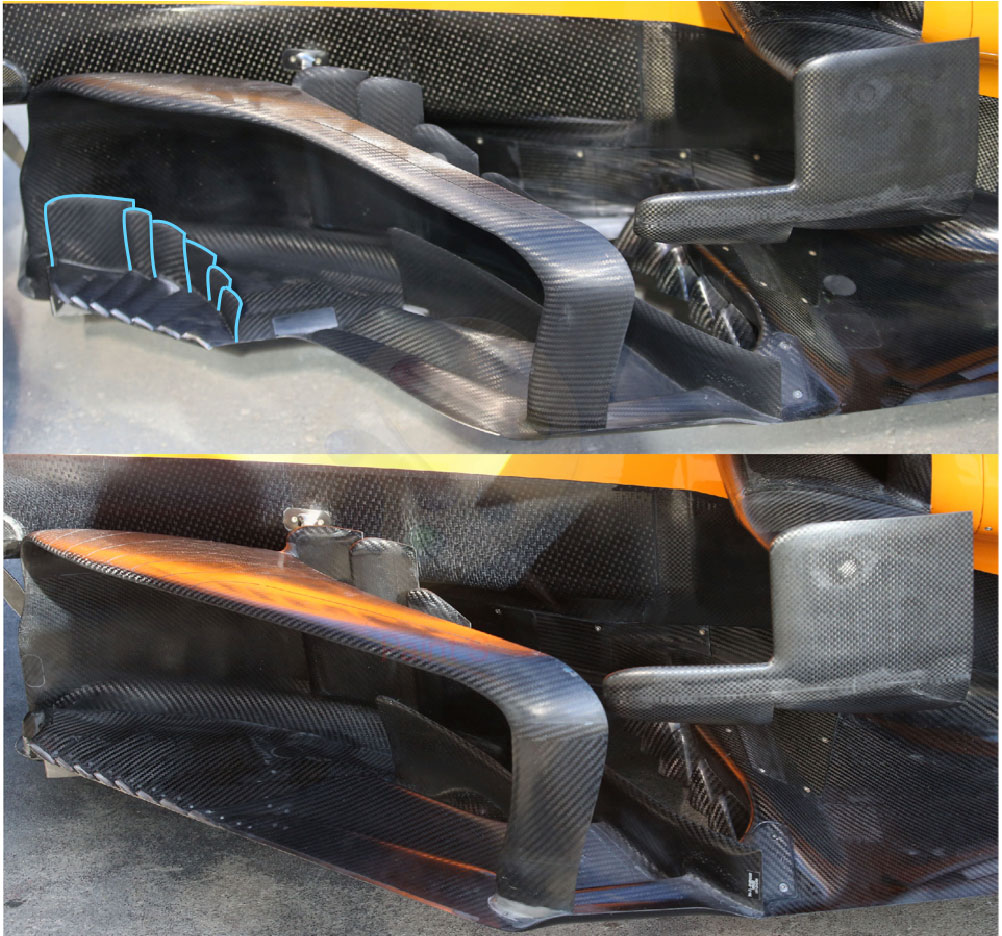
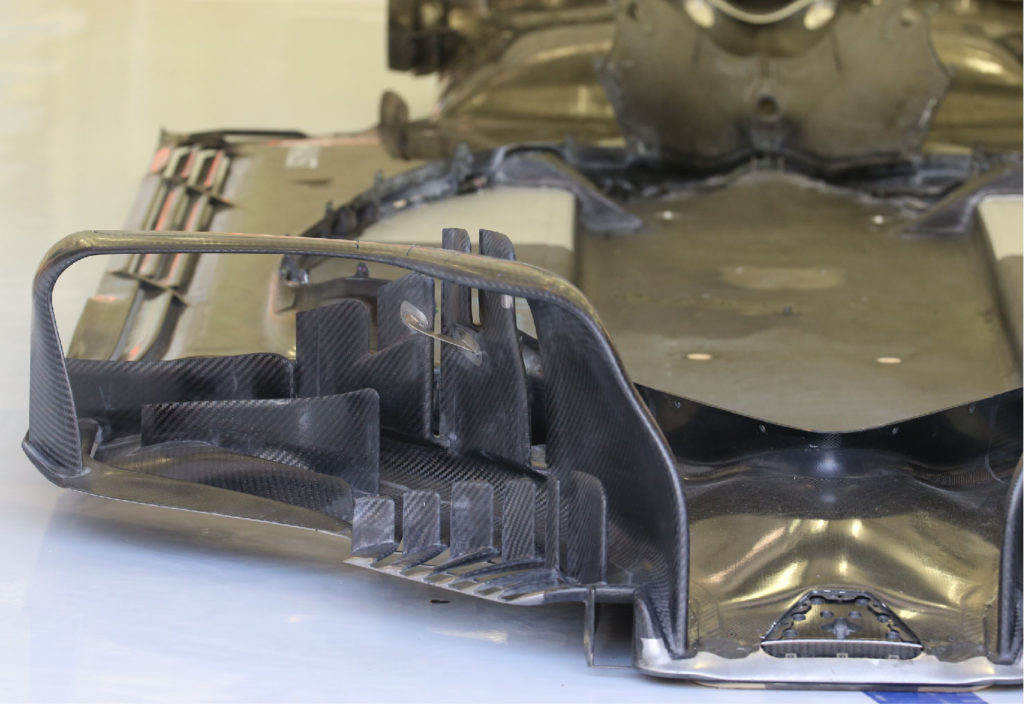
McLaren MCL34 Australia Tech update
One area of the front brake duct that teams were developing was the surface which the suspension arms attach too. As highlighted in blue below, McLaren were experimenting with an additional carbon fibre piece, presumably to help tidy up the flow in this area.
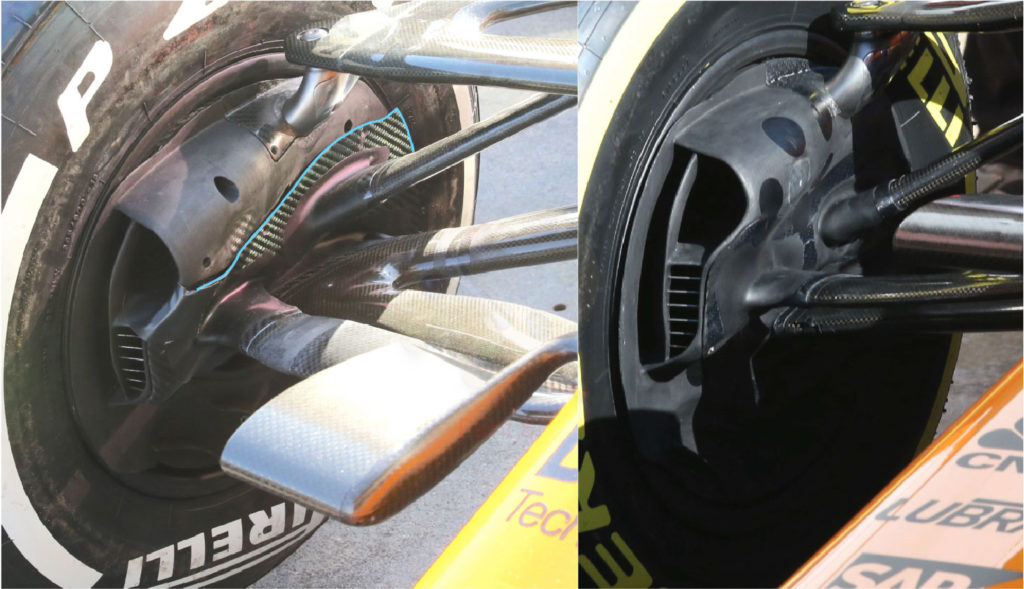
One interesting design feature on the McLaren MCL34 is the additional fin on the engine cover. The conventional sharkfin is common on today’s F1 cars, however McLaren’s design reduces in width as the engine cover begins to slope downwards.About a third of the way down, the fin’s width increases and continues to increase consistently until it reaches the rear of the car. In addition to this, another fin has been added and although this may look like this is to simply accommodate the number ’55’, it is most likely for some sort of aerodynamic gain.
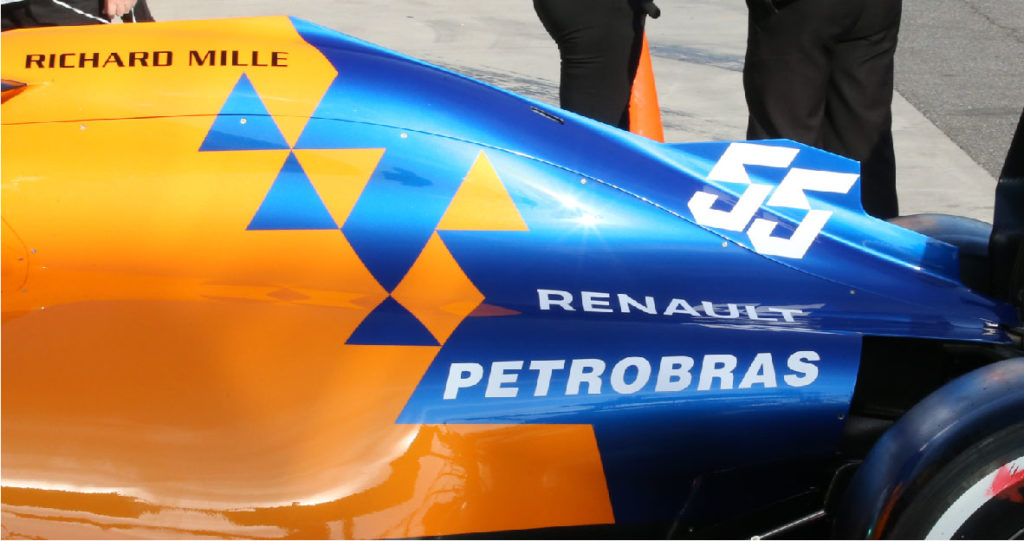
Similar to the front, the rear brake ducts guide airflow into the wheel assembly. This air plays several roles. Firstly it is flowed over the brake system for cooling and as it extracts heat from the brakes, the air can then transfer this heat to the wheel rim. This helps to maintain the wheel rim temperature to help warm up the rear tyres if necessary. Finally, air flowing through the wheel can also help guide any upstream wake further away from the car, preventing it from affecting rear aero performance. Below is a rare glimpse into the rear brake ducts of the McLaren MCL34. The number and size of the brake duct elements clearly indicate how vital maximising the airflow into the wheel assembly is.
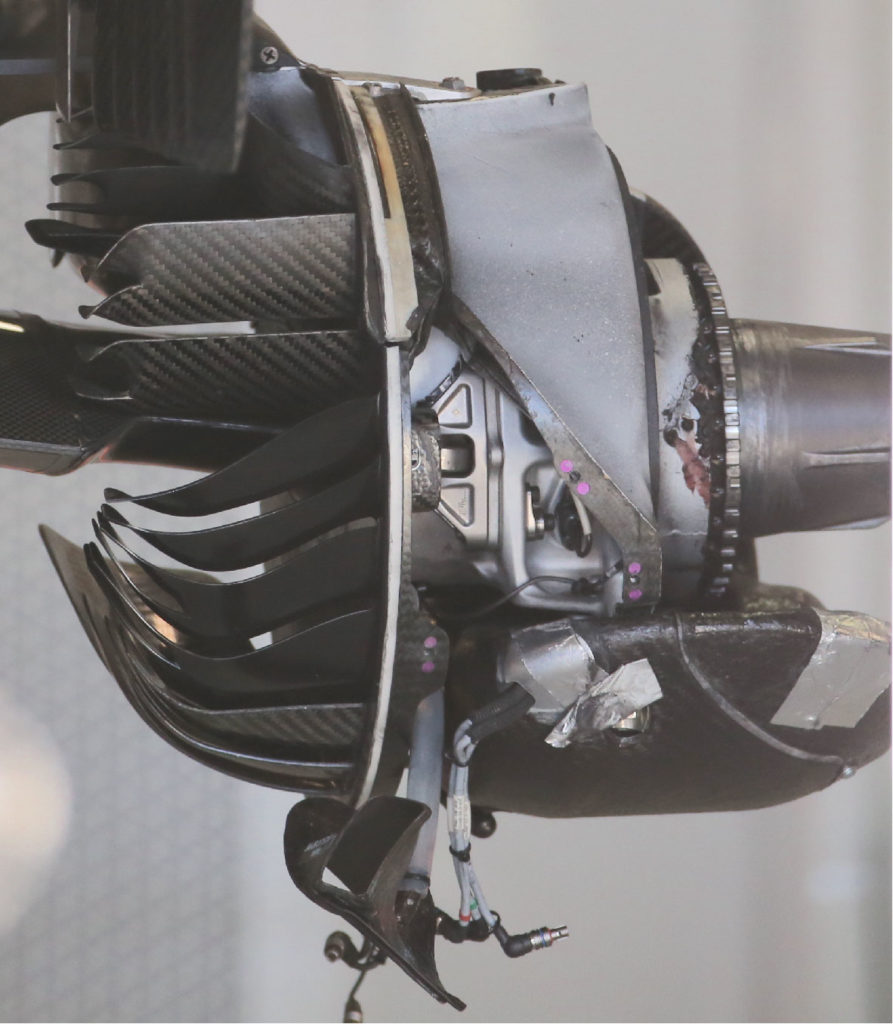
Keep up to date with all the latest motorsport technology with a Racecar Engineering subscription

